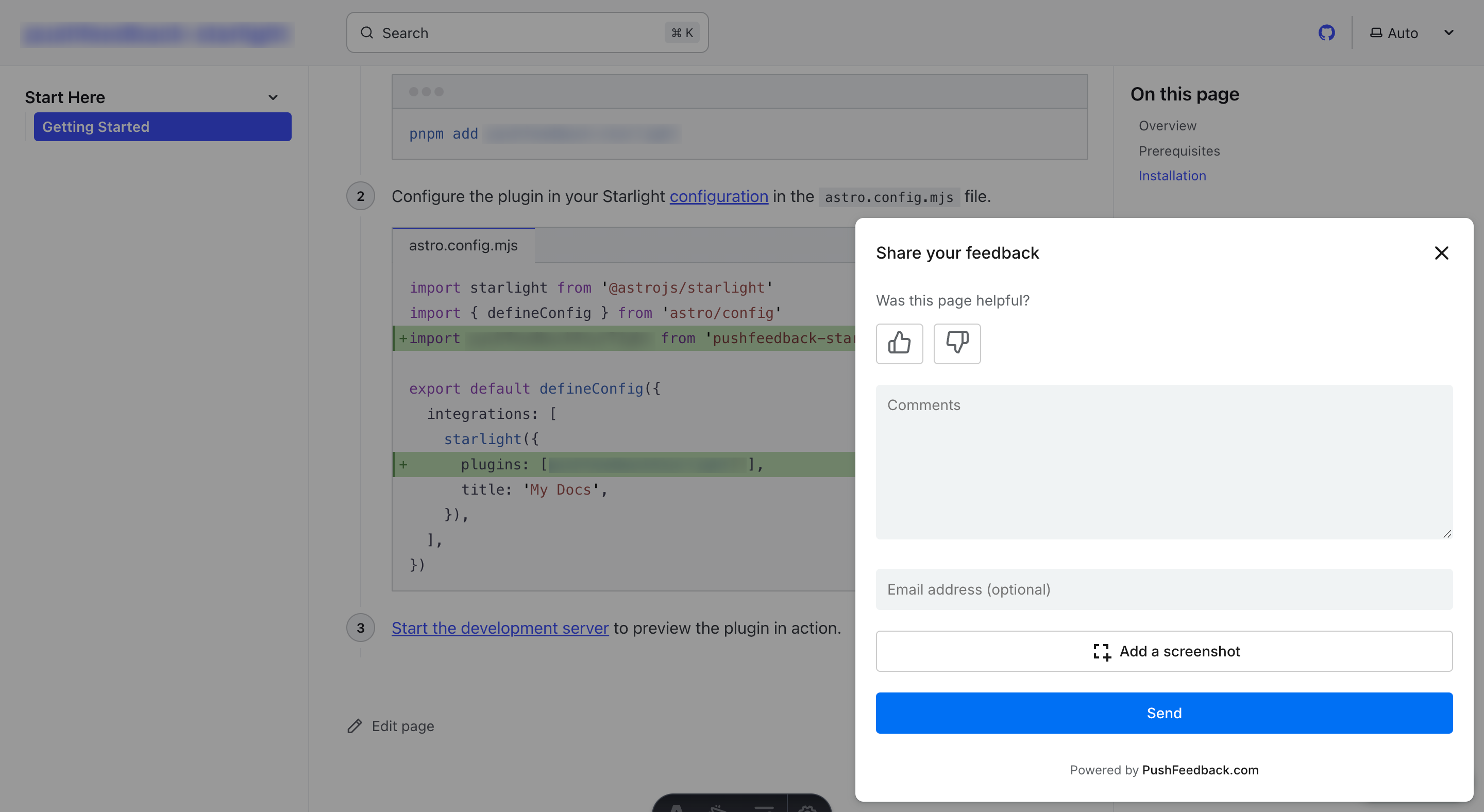Feedback widget for Vue.js
Here's a step-by-step guide to help you install PushFeedback in your Vue.js project using NPM.

Prerequisites
Before you begin, you'll need to have the following:
- A PushFeedback account. If you don't have one, sign up for free.
- A project created in your PushFeedback dashboard. If you haven't created one yet, follow the steps in the Quickstart guide.
- A Vue.js project and Node.js installed.
Installation
To integrate the PushFeedback widget into your Vue.js site:
Open your terminal or command prompt. Navigate to your project's root directory using the
cdcommand:cd path/to/your/projectReplace
path/to/your/projectwith your project's actual directory path.With your terminal still open, run the following command to install PushFeedback:
npm install pushfeedbackOpen your main Vue component or the desired Vue component where you want the feedback widget to appear. Then, incorporate the PushFeedback styles and scripts:
<script>
// Incorporate PushFeedback styles
import 'pushfeedback/dist/pushfeedback/pushfeedback.css';
// Initialize the PushFeedback widget
import 'pushfeedback/dist/pushfeedback/pushfeedback.esm.js';
</script>In the template section of your Vue component, add the following snippet:
<template>
<!-- Rest of your component's template -->
<feedback-button
project="<YOUR_PROJECT_ID>"
button-position="bottom-right"
modal-position="bottom-right"
button-style="dark">
Feedback
</feedback-button>
</template>Replace
<YOUR_PROJECT_ID>with your project's ID from the PushFeedback dashboard.After making these changes, navigate back to your Vue.js project root and run:
npm run serveOpen the website in a web browser to verify that the feedback button appears and works correctly.
Next steps
For more about customization and additional features exploration, check out the Customization section.
Need assistance? We're here to help! Reach out to us at PushFeedback Support.